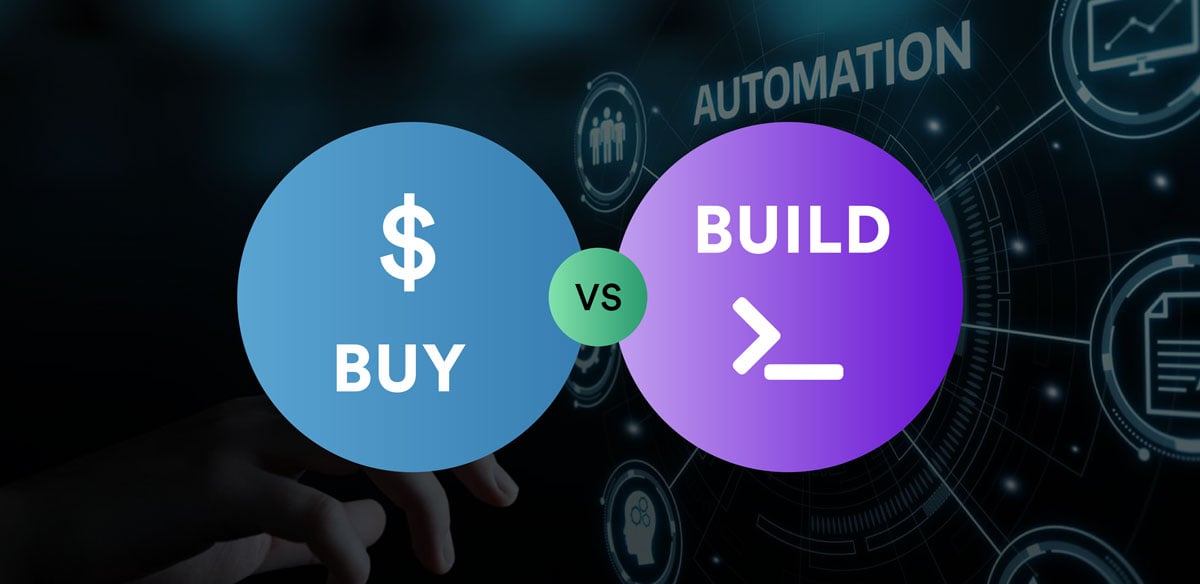Automation reduces the effort of manual, repetitive tasks that need to be performed frequently, thus reducing the risks of human error, helping maintain consistency, and increasing productivity and efficiency.
Within FinOps, automation is crucial in managing cloud spend. FinOps practitioners have plenty of opportunities and tools to automate at hand. Once the FinOps team validates that automation is the best solution to achieve your organization’s goal, the inevitable debate arises: should you buy or build?
As the adoption of cloud computing services escalates, enterprises face the challenge of effectively managing cloud costs.

Research from Gartner shows that presently more than 70% of companies have migrated part of their workloads to the cloud, with cloud adoption expected to continue growing in the aftermath of COVID-19. However, as multi-cloud or hybrid cloud computing usage keeps trending upwards, enterprises struggle to manage their cloud spend. According to Gartner’s predictions, by 2024, 60% of infrastructure and operations leaders will see their public cloud costs go over budget. In this new cloud-driven business landscape, implementing cloud cost optimization strategies will become crucial.
Cloud service providers market the pay-per-use benefits of the cloud. In reality, as J.R. Storment and Mike Fuller state, “you pay for the resources you provision, whether you use them or not.” Most engineers will be tempted to overprovision when running at scale in the cloud, resulting inevitably in some wasted resources. FinOps provides engineers with the necessary criteria to measure their application’s requirements and align their cloud spend with the business goals. In practice, FinOps operates as a cultural shift across the entire organization that empowers all teams to collaborate in order to reduce cloud usage at scale and prevent future waste. One way FinOps can drive waste reduction and cloud spend optimization is automation.
Why automation is important in FinOps
Depending on the scale and growth phase, organizations need to establish the specific goals they want to achieve with FinOps automation and regularly reevaluate the benefits it can provide. For example, automation becomes practical when the potential savings it can generate is greater than the cost of buying or building the automation tool. However, in some cases, automation may exceed the efforts of a manual task but still be the correct solution, such as to avoid human error and reduce engineers’ efforts to fix those errors. When evaluating whether to automate or not, Jan Urbanc, Director of Security Operations at GitLab, offers a simple solution: “if an event doesn’t require human judgment to be processed, then why is a human looking at it?”
As cloud environments become more dynamic and complex, automation becomes vital to ensure consistency across FinOps processes and improve reliability. There are many automation tools available within the FinOps framework. Organizations with efficient FinOps practices have typically implemented the following automation solutions: tag governance to increase compliance and scheduled resources and usage reduction to cut cloud costs. As the business matures, FinOps automation can help run at scale while focusing on the desired outcome.
FinOps Automation Tools – Buy versus Build

The buy versus build argument is a common issue surrounding modern technology tools. With FinOps, there are several aspects to consider when evaluating whether to build or buy automation tools: costs versus benefits, security and compliance implications, and maintenance and updates.
Costs versus benefits
Successful automation helps reduce cloud management costs and fast-forward your business goals, but it is not free. So before investing effort and money in building your own tool, Storment and Fuller suggest assessing what your organization can buy compared to off-the-shelf offerings.
When embarking on a FinOps automation journey, a third-party tooling company can provide insights into FinOps automation best practices and guidance on how to derive the greatest value from their offerings. Panther Labs’ Director of Engineering, Joren Reynolds, recommends organizations approach the question of building or buying by first thinking about how fast they want to achieve their goals and how much flexibility they need. According to Reynolds, it is essential to be realistic about whether or not your organization is uniquely positioned to build the tool, and if so, are you capable of maintaining it over time?
Security and compliance
The issue of security adds another layer of dissension among engineers when it comes to build or buy. Because automation needs broad access to cloud environments, there is a high risk of data corruption and external threats, making security teams reluctant to opt for vendor tooling. Furthermore, tooling providers may not be certified for industry-specific compliance requirements. Another major drawback attributed to using third-party tools is feature incompatibility with your environment or integrating with existing applications.
Conversely, building software in-house does not guarantee it is entirely secure. In a recent webinar hosted by Panther Labs, Urbanc claims that companies’ reliance on third-party vendors has increased as the cloud became the standard for running complex infrastructure. Moreover, he explains that companies have to trust that third-party vendors will do their due diligence to secure their data while monitoring those systems. Indeed, being able to audit automated actions is essential in building transparency and ensuring compliance.
Maintenance and updates
According to Panther Labs’ Director of Engineering, Joren Reynolds, when making the hard decision of whether to build or not, organizations often overlook the time it takes to build the tool to the point of viability and the time it takes to maintain it for the years to come. This includes the ability to provide training for existing teams and future hires, as well as taking into account the risk of seeing the people responsible for building and maintaining the tooling leave. On the other hand, third-party automation vendors can provide training materials. Furthermore, they offer the added benefit of a team of engineers maintaining and continually improving the automation tool.
Buy or Build – A Definitive Answer?
When it comes to buy versus build, many factors keep the debate going. With FinOps automation tools, experts seem to favor cloud-native, third-party Saas or prebuilt automation solutions. However, it is crucial to evaluate the security and flexibility of the third-party vendor tooling before implementation.
If no vendor automation solution answers your organization’s needs and you decide to build, make sure to consider the effort of building all the necessary features and maintaining and updating the tool.



